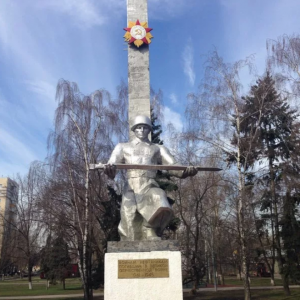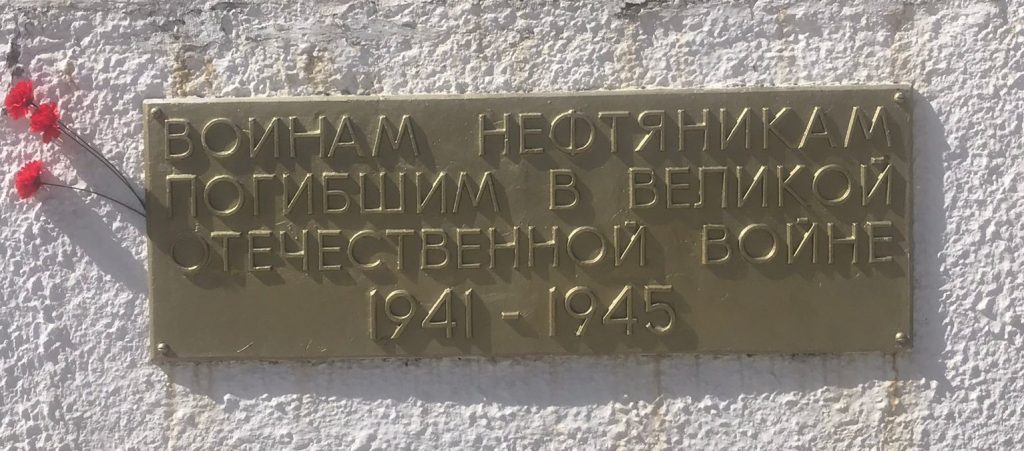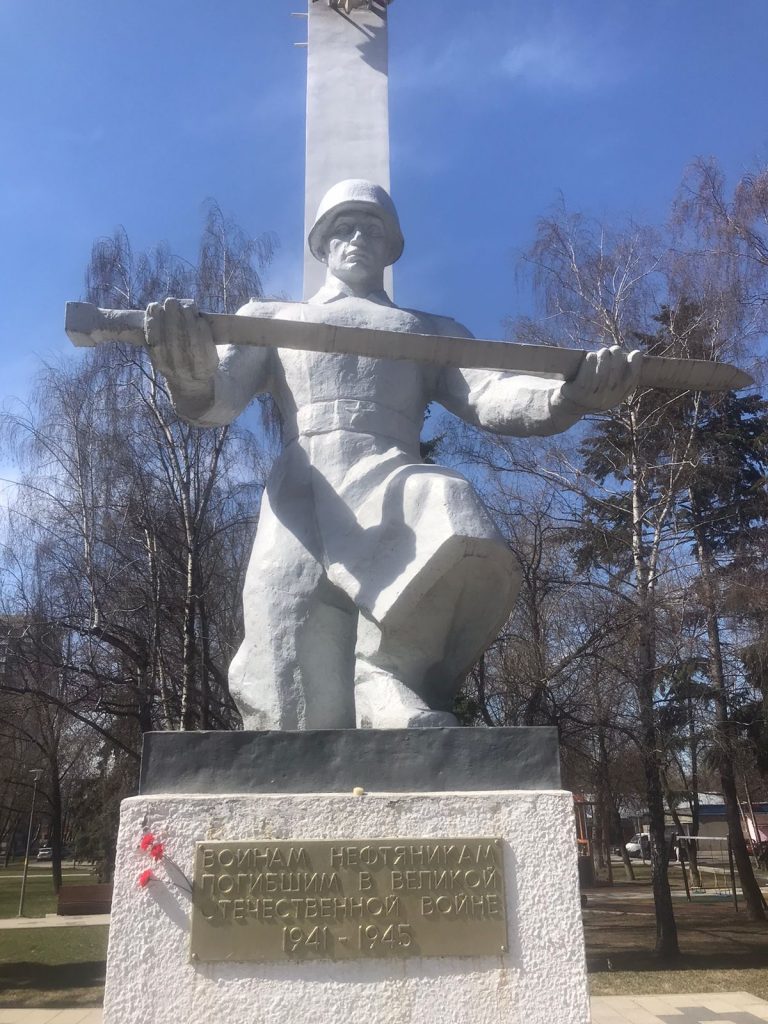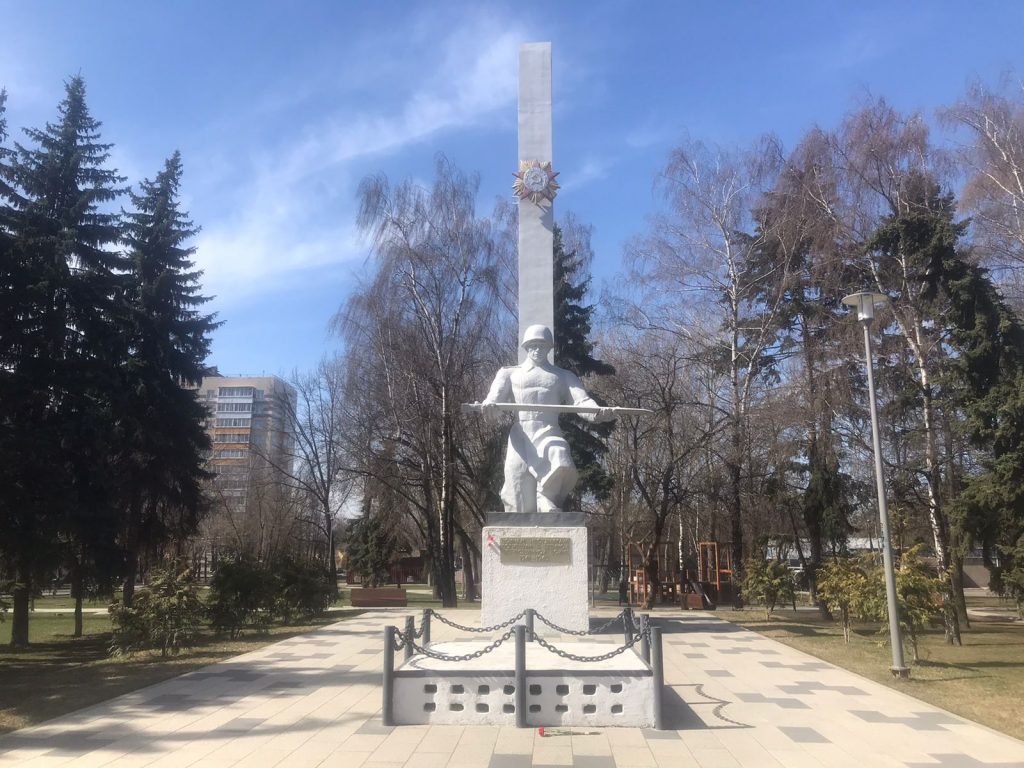Monument to oilmen soldiers who died in the Great Patriotic War

The monument is a figure of a soldier of the Red Army, who is bent on one knee and holds a sword in his outstretched hands. A metal decorative element in the form of the Order of the Patriotic War is reinforced on the stele in the upper part. On the front side of the pedestal there is a metal memorial plaque, on which the inscription is executed in superimposed letters: “To the soldiers-oil workers who died in the Great Patriotic War of 1941-1945.” The monument is located in the Kapotnya district of Moscow. The history of the Kapotnya district, during the war years, is directly connected with the Oil Refinery. In 1936 a site was chosen for its construction near the village of Kapotnya in the Lyubertsy district, bounded on one side by the Moscow River, and on the other by a ravine near the village of Chagino. And it is no coincidence: they intended to deliver barges with the necessary raw materials along the river to the plant. The plant was launched on April 1, 1938. However, during the Great Patriotic War, when the front line approached the capital and many Moscow enterprises were evacuated to the east, however, it was impossible to evacuate the refinery, and the country’s need for fuel increased dramatically. The plant was located in the very centre of it, from here it was convenient to deliver fuel to the front. The Fascist command was aware of the role played by the plant in providing the Soviet army and the rear, and sought to destroy it at all costs. On the night of July 22, fascist aircraft appeared over the plant, and incendiary bombs began to fall on its territory. In a hurry, a fake plywood factory was built next door to deceive the pilots. A good bunker was built at the fake factory, telephone communication was carried out there, hundreds of barrels with fuel residues and oiled rags were delivered. To make it more similar to the prototype, the twin plant was slightly disguised, trees were brought from the forest and planted, and as a result, the fake did not differ from the real plant in aerial photographs. Soon, an observation tower reported that an attack began on the false factory. The workers in the bunker deliberately lit barrels and rags to create the impression of a fire. This technique helped to put the pilots off their guard. The heroic defence of the facility lasted ninety days. Eventually, in October, the weather worsened, rains began, and enemy air raids stopped. The workers defended their factory. During the war, the plant continued to operate at full capacity, supplying fuel to the Red Army. Tens of thousands of tons of gasoline were sent to besieged Leningrad.
Адрес: Москва, сквер Героев-Нефтяников


